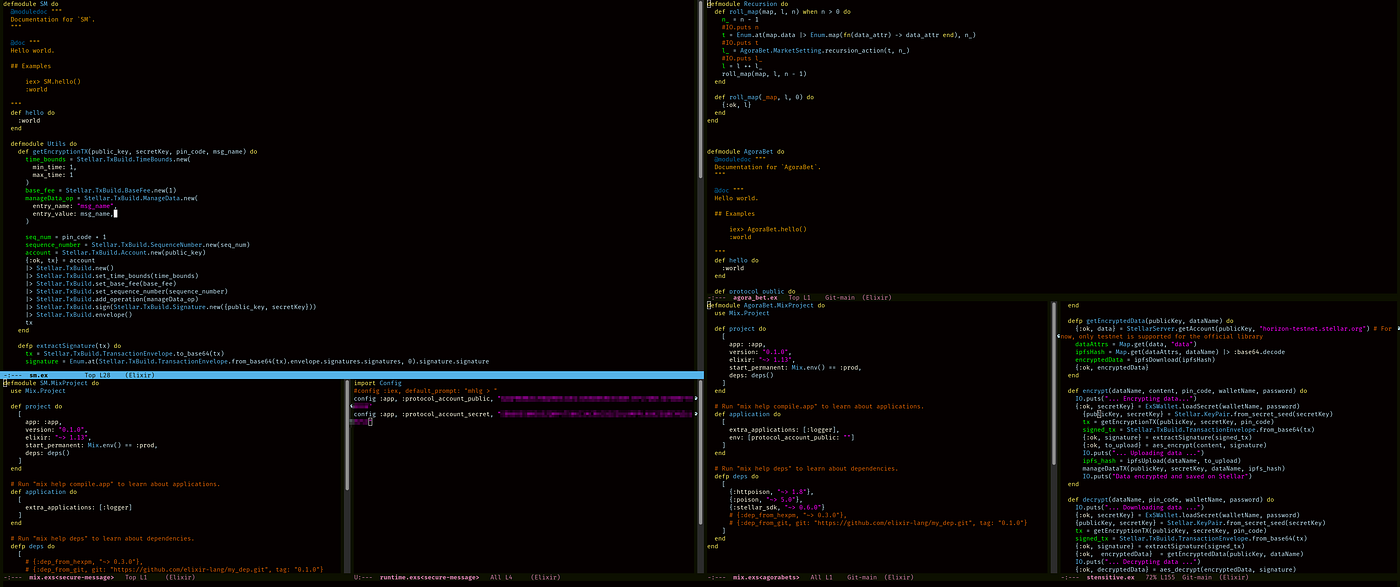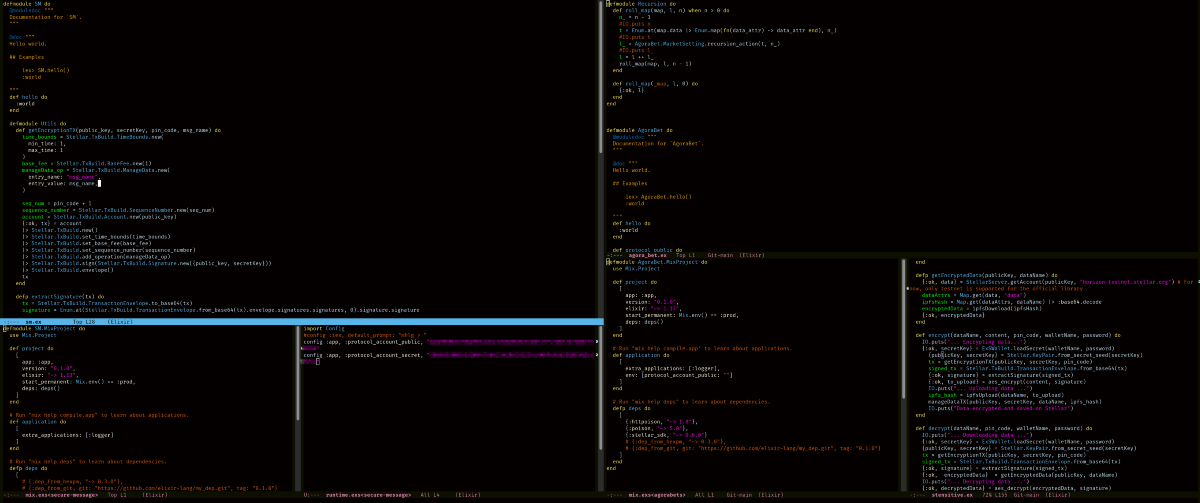[ad_1]
I’ll have simply ended my editor hunt
Some time in the past, I wrote this article about how I had arrange Vim for Python growth. Over the past two years, I’ve made large adjustments to my dev toolkit:
- I hardly use Python anymore, if not for prototyping in ML.
- I haven’t used vim for a yr now, I’ve used VSCode (and Emacs).
On this article, I’d like to speak about why I’ve been slowly switching to Emacs for many of my work and a high-level overview of what customizations I’m including.

I don’t wish to begin a struggle on this subject. I don’t know each Emacs and Vim deeply sufficient to have a say on which one is healthier (if there’s one which’s higher than the opposite), however this Stack Overflow reply (together with different solutions) pointed to me that Emacs is extra customizable than Vim, which is, however, quicker and simpler to be taught.
I used to be trying to find an editor that I may (simply) flip into all the pieces I needed, and Emacs appeared to me like a greater match.
I’m by no means an skilled with the editor, nor am I planning to turn out to be one. A very powerful factor I discovered is that Emacs is programmable with Emacs Lisp. It may be your browser, terminal, editor, launcher, picture editor, visitors interceptor, and the checklist goes on for no matter involves your thoughts.
Additionally, the nice information is that Emacs has been round for lots of time, and there’s loads of open supply code that you need to use and combine into your settings.
Editor navigation
After I was studying the quickstart Emacs file for the primary time, navigating the editor felt tough. Now I nearly can’t edit a bit of textual content with out utilizing Emacs keybindings.
A key binding that, for example, has positively impacted my workflow is C-u n (ctrl + u), because it permits me to repeat a command of my alternative for n instances.
Customizing Emacs
My favourite place to customise Emacs is the Superior Emacs GitHub repo. It’s a assortment of Emacs packages and libraries organized by class.
To take customization to the subsequent step, you’ll have to be taught Emacs Lisp. I’m not but completed studying Lisp, however some teachings have already come in useful, for instance discovering information on startup to have them prepared as buffers.
Why do I like Emacs greater than VS Code? And if I like Emacs extra, why am I nonetheless utilizing VS Code?
VS Code is a superb editor, and for what it’s value, it’s additionally simply customizable. However after a few days of utilizing Emacs, I couldn’t inform the distinction between the 2. And after one other couple of days, I couldn’t imagine I had been lacking out for a very long time: Emacs appeared a lot quicker and minimal.
To be sincere, I’ve not built-in loads of issues in my setup, I simply want a quick editor, I do the remainder from the terminal. This strategy makes light-weight and customizable editors like Emacs and Vim a superb alternative.
Moreover, Emacs permits me so as to add extremely helpful (and particular) customizations. One of the best half is I can add conditional statements for the editor when it fires up. For instance, relying on the listing from which I’m launching Emacs, I can:
- apply customized key bindings
- use particular themes and packages
- pay attention for adjustments in information and recompile the challenge.
(add-hook 'emacs-startup-hook
(lambda ()
(setq launch-dir default-directory)
(message launch-dir)
(cond
((equal launch-dir "~/Desktop/secure-message/")
(message "loaded in Safe Message dir, making use of configs")
;; Do stuff
)
)
))
This is without doubt one of the settings I’ve utilized to my Emacs and discover it superior, particularly since I normally work on long-term initiatives that use completely different applied sciences and require completely different configurations, keybindings, and so forth.
Emacs permits me to have it work as a unique editor relying on the initiatives I’m engaged on, particularly when it comes to key bindings since I can have the identical mixture carry out completely different actions relying on the listing.
At this level of the article, you’ve discovered that I like Emacs far more than VS Code. But, there are some duties that I nonetheless discover quicker within the former, for instance, I want VS Code when working with SvelteKit. Nevertheless, I’m already engaged on some settings to alter that and finally begin utilizing Emacs additionally for SvelteKit.
I like the thought of getting all the pieces optimized for my use-specific instances, which is an effective sufficient motive for me to finally fully change to Emacs, however I suppose it is going to take a while.
This text’s key level is to indicate how Emacs can work as a clean canvas that may be stuffed with no matter you need, even for somebody who had by no means touched Lisp. As I exploit it, I add extra configurations that make my workflow with Emacs a lot quicker than with VS Code.
I generally change again to VS Code for a few hours after I can’t determine a means of getting some options to work as I count on them to, however finally really feel responsible for not utilizing Emacs, discovering a solution to get issues performed, and witnessing I’m doing issues quicker than earlier than.
That stated, I wouldn’t suggest Emacs to absolute inexperienced persons within the programming area. Not as a result of they wouldn’t be capable of get their settings proper, however as a result of they normally work on a lot of small initiatives, and writing customized configurations for every one in every of them could be exhausting and time-consuming.
[ad_2]
